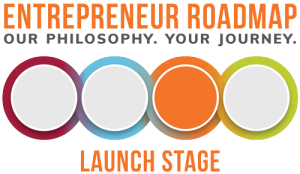You’ve Launched Your product… Now Comes The Hard Part!

 Congratulations! You’ve built and launched a product! Now it’s time for the heavy-lift… onboarding and adoption. Say hello to your new key function, Customer Success!
Congratulations! You’ve built and launched a product! Now it’s time for the heavy-lift… onboarding and adoption. Say hello to your new key function, Customer Success!
A newer term that grew out of the concept of customer support, Customer Success focuses on proactive behaviors, specifically:
- Getting the user actively engaged
- Focusing on early usage
- Ongoing engagement (say no to churn!)
There were a lot of things laid out in those bullets, so let’s go step by step in what is needed to support product consumption.
Post Purchase Engagement
Once a user commits to your product, they need to go through the steps of access, download, implementation, etc. While different for each company, these initial steps are what it takes to get a customer up and using your product and are often collectively referred to as “onboarding.” Included in this may be some level of training, which can be provided live or recorded, and is typically parsed out in sequenced chunks.
How the onboarding sequence is designed depends entirely on the business model. For example, if the product is Freemium SaaS (free to download, pay for premium content Software as a Service), focusing on immediate usage and value creation is important to convert a user to a buyer. If the user doesn’t convert, there will be no associated revenue and all the cost to acquire will be lost.
If you aren’t tired of the reference yet, this is a great time to go back and look at some of your initial customer interviews and make sure that you are keeping the customer’s problem top of mind as you design your onboarding process. How quickly do you align the information to what the user is trying to accomplish, and how easy is it for them to get there? This will go a long way toward the desired goal of proving product-market-fit and will help you build the case for why your solution works.
Adoption and Usage
Would you be surprised if I told you that 90% of all revenue comes post-sale? Depending on your pricing model, focusing on adoption is critical to driving supplemental revenue. If you are a monthly subscription service that does not continuously check on customers, ensure that they have what they need, promote new activities or solve existing problems, you are going to face large churn numbers that erode your traction. Using triggers to identify how customers are and are not using your product will ensure that there fewer end of month surprises.
Great examples of triggering metrics are logins or minutes spent on your solution, or specific activities that drive value in your solution. For example, if your solution helps a small business manage their account profitability, and they drop from entering 10 accounts a week to 2, you have a trigger that there is something amiss that is worth looking into.
In addition to triggers, you will have lagging metrics like Net Promoter Score (NPS) or Product Market Fit (PMF) where a customer or user can give you direct feedback on how you are doing. While more qualitative in nature, these are great indicators on how you’re doing, and can give you a warning if a customer or user is getting frustrated. This is a great way to keep a pulse on the connection between problem and solution, as well as anticipate potential churn.
Speaking of Churn
It’s hard to talk about churn, especially when you’ve spent so much time building and getting a product out. That said, being honest in saying that churn happens and creating plans to address is the wisest way to think. While there are different ways to calculate (Revenue, Customer, Users), consistently tracking is going to be a huge part of your strategy and will allow you to pinpoint the areas you can improve.
If you’re ready to drill in, take some time and read the following blogs on building a Customer Success Strategy and program. Please make sure that you have all that information you collected during your customer interviews handy, you will need them. Also, please know that we are here and happy to chat as you start to build out your plan, we’re always happy to help.
